AMD Ryzen 7 8700G and Ryzen 5 8600G Review: Zen 4 APUs with RDNA3 Graphics
by Gavin Bonshor on January 29, 2024 9:00 AM EST- Posted in
- CPUs
- AMD
- APUs
- Phoenix
- 4nm
- Zen 4
- RDNA3
- AM5
- Ryzen 8000G
- Ryzen 7 8700G
- Ryzen 5 8600G
CPU Benchmark Performance: Science And Simulation
Our Science section covers all the tests that typically resemble more scientific-based workloads and instruction sets. Simulation and Science have a lot of overlap in the benchmarking world. The benchmarks that fall under Science have a distinct use for the data they output – in our Simulation section, these act more like synthetics but, at some level, are still trying to simulate a given environment.
In the encrypt/decrypt scenario, how data is transferred and by what mechanism is pertinent to on-the-fly encryption of sensitive data - a process by which more modern devices are leaning to for software security.
Adding to our 2024 CPU suite, we've included the Montage Astronomical Image Mosaic Engine (MAIM) benchmark and OpenFOAM 1.2 and retained our gaming simulation benchmarks, including our Dwarf Fortress and Factorio benchmarks.
We are using DDR5-5200 memory as per the JEDEC specifications on the Ryzen 7 8700G and Ryzen 5 8600G, as well as DDR4-3200 on the Ryzen 7 5700G and Ryzen 5 5600G. The same methodology is also used for the AMD Ryzen 7000 series and Intel's 14th, 13th, and 12th Gen processors. Below are the settings we have used for each platform:
- DDR5-5200 CL44 - Ryzen 8000G
- DDR4-3200 CL22 - Ryzen 5000G
- DDR5-5600B CL46 - Intel 14th & 13th Gen
- DDR5-5200 CL44 - Ryzen 7000
- DDR5-4800 (B) CL40 - Intel 12th Gen

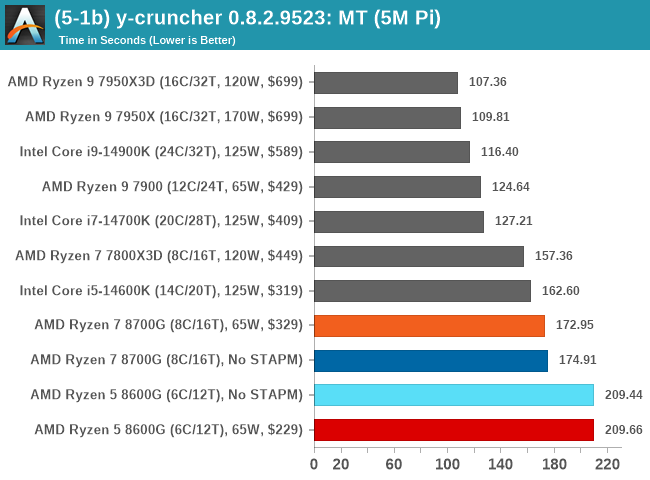
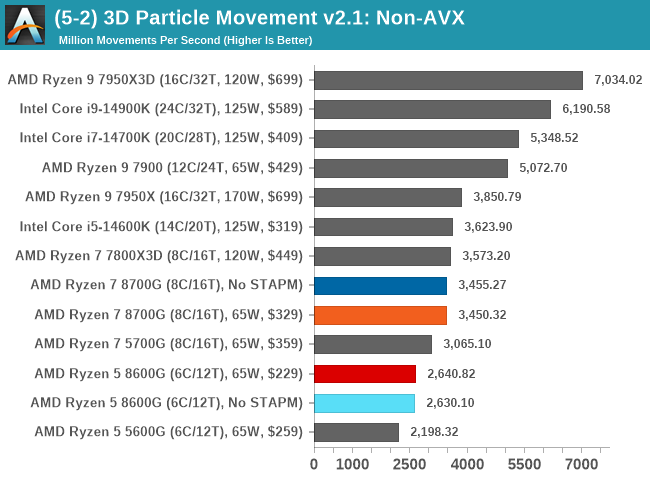


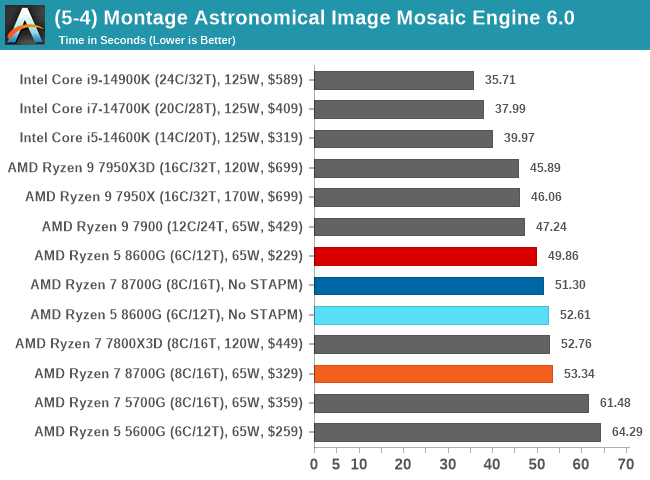
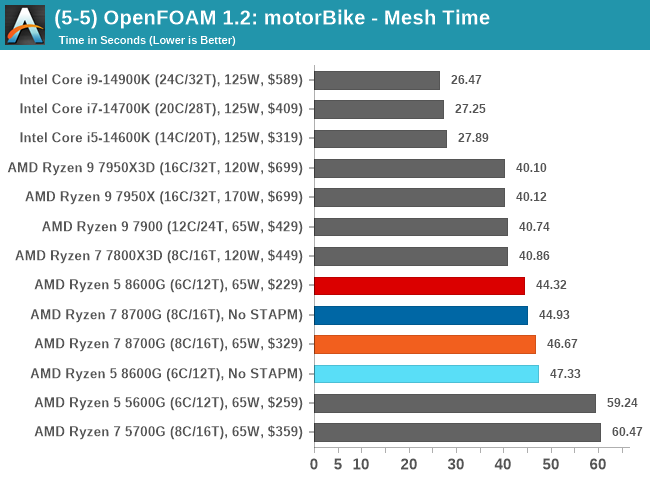
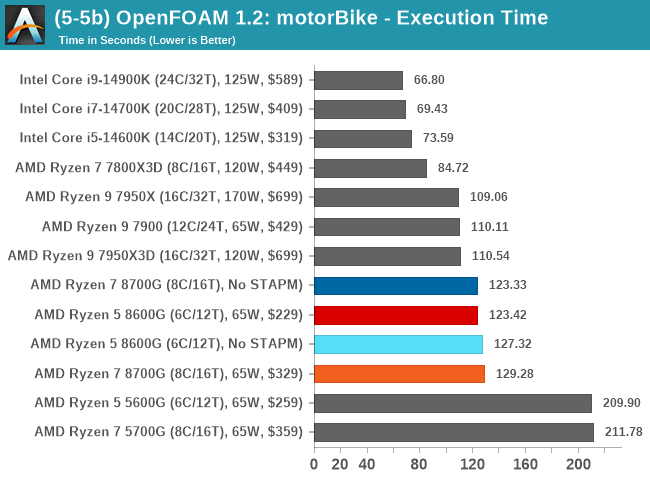

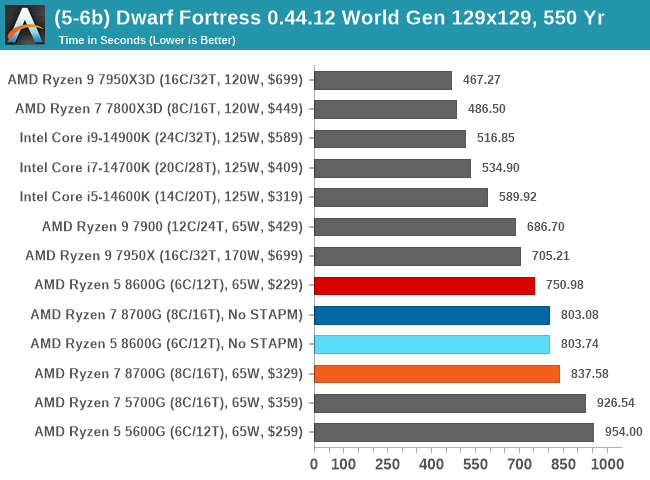
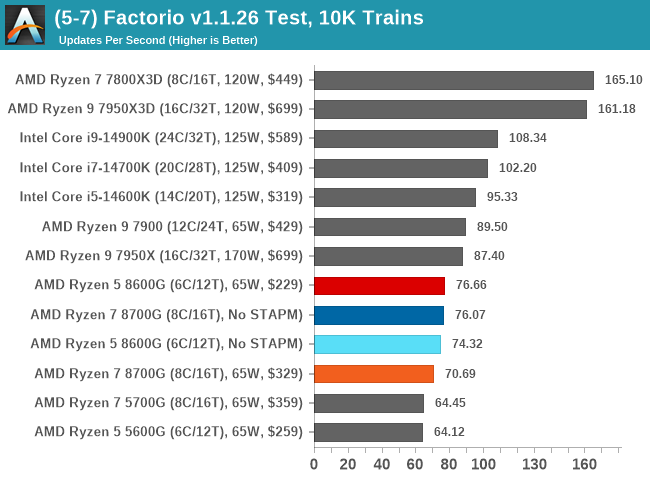
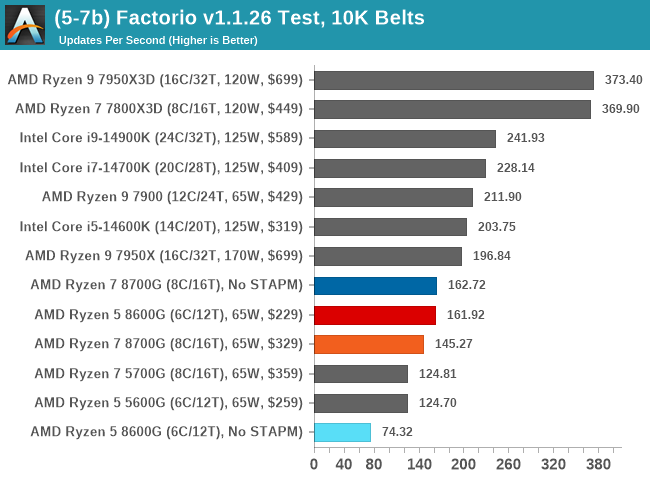
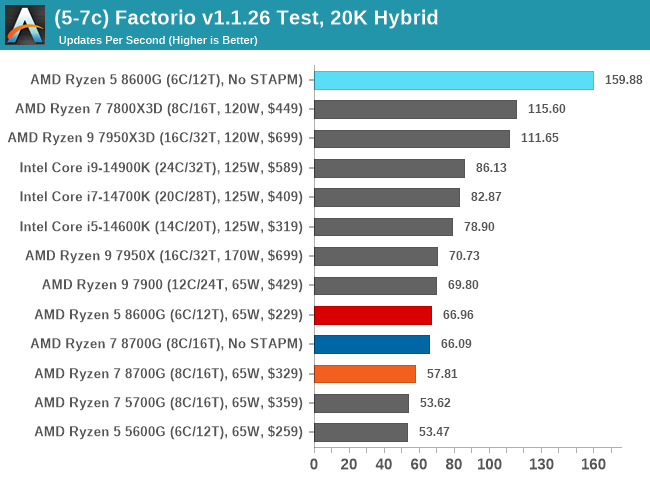
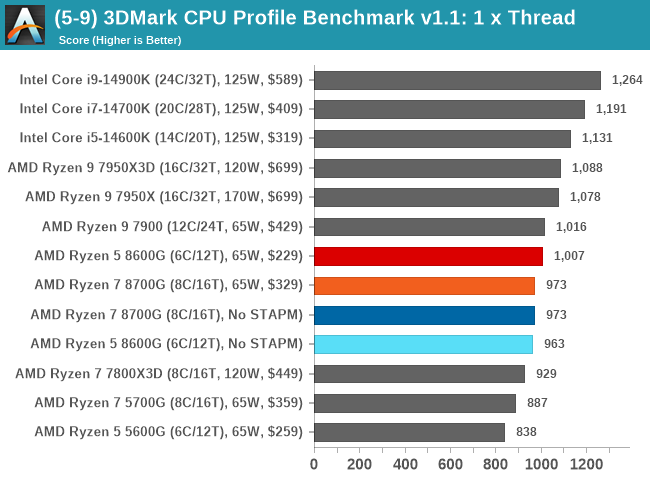
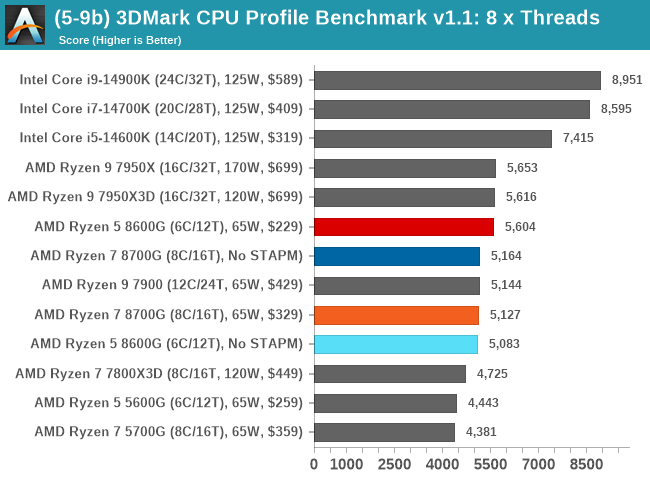
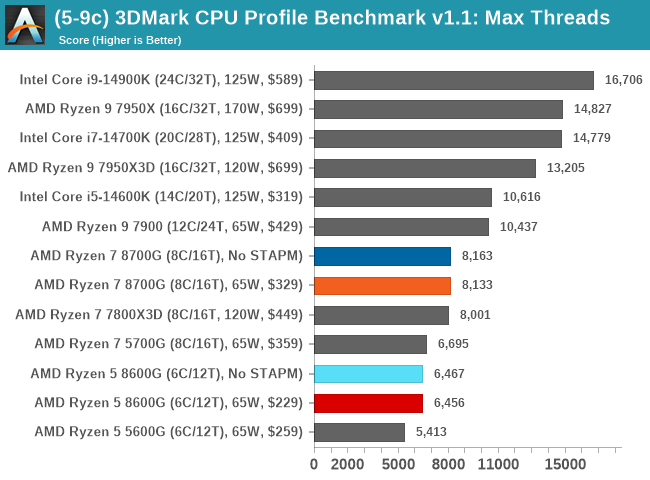
In our simulated and science-focused tests, much of the same happens here as we saw in encoding and rendering; bigger cores and more of them make the difference. We did see strong AVX performance, which is a given since Zen 4 supports AVX-512 workloads via two 256-bit channels. We also saw solid performance in y-Cruncher, with the Ryzen 5 8600G beating out the Ryzen 9 7900 in single-threaded performance. This shows that despite using more power-efficient Phoenix dies, Zen 4 on mobile still offers solid single-threaded performance when transitioned over to the desktop.
Testing without STAPM limitations in our Science and Simulation benchmarks and removing the sustained power management limits didn't really make much difference in performance in these tests.










111 Comments
View All Comments
t.s - Tuesday, January 30, 2024 - link
well, I care.goatfajitas - Tuesday, January 30, 2024 - link
I do see your point. You can put in some high end cooling and take advantage of the speed. That still doesnt fix the fact that it runs extremely hot and power hungry compared to its competition.ricebunny - Tuesday, January 30, 2024 - link
Highly dependent on application. In games they pull around 125W, roughly the same as high end Zen 4 CPUs.goatfajitas - Tuesday, January 30, 2024 - link
"Highly dependent on application. In games they pull around 125W, roughly the same as high end Zen 4 CPUs."Agreed on some setups. I have seen some equivalently equipped SFF/Tiny desktop setups (with obviously limited thermals) and Intel drops off alot earlier. The point being it runs too hot.
WaffleTech - Sunday, February 4, 2024 - link
"roughly the same"ComputerBase measured this over more than a dozen games and on average it's 149W for the 14900K and 72W for the 7950X3D, which is less than half. Even the Non-X3D 7950X with 105W uses almost 30% less in games.
Thunder 57 - Tuesday, January 30, 2024 - link
It's the enormous heat output that is the problem, not the electric bill.yankeeDDL - Thursday, February 1, 2024 - link
"no issue"? Are you joking?Cost aside, to dissipate 400+W you need massive cooling, and the MoBo needs to be way over-designed.
Intel peaks at 4x the power of Ryzen to, maybe, marginally beat it in few benchmarks. That's not irrelevant at all: this kind of delta in efficiency applies also on mobile (albeit not so extreme): that translates in battery life (and slower performance, as on laptops you can't peak at those levels).
is4u2p - Wednesday, January 31, 2024 - link
Was this in the 12th gen mobile CPUs?lakedude - Friday, February 9, 2024 - link
"Peak power is an irrelevant metric." maybe to you.Going AMD this time allowed me to save money on the cooler and the power supply. Gonna save money on electricity as well.
I hate the way Intel plays games with their TDP these days. Don't say something is 125w TDP if it can pull over 300w. Call it a 300w chip that can be underclocked or power capped to 125w. Or have it only pull 125w out of the box rather than leave it up to the user to fiddle around with turning it down.
wwenze - Monday, February 5, 2024 - link
Well, Intel definitely has the advantage when it comes to "not dying when pushed hard" or even "not dying when running at the actual stated specs" but outdate efficiency/IPC, while AMD is the opposite on both fronts.So Intel put the pieces together and said "what if we clock it until 250W turbo TDP while the competition only has 100W at that price point"